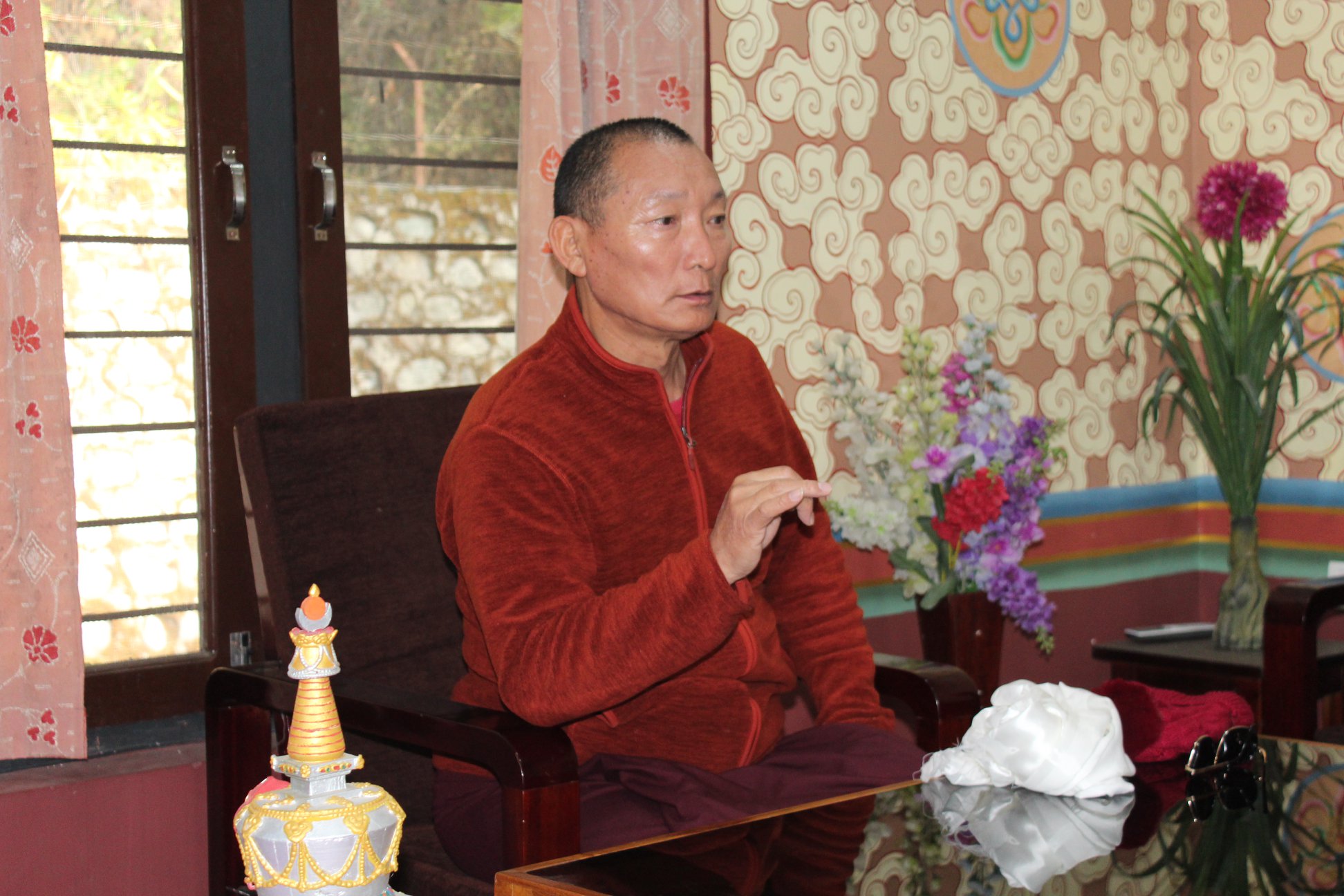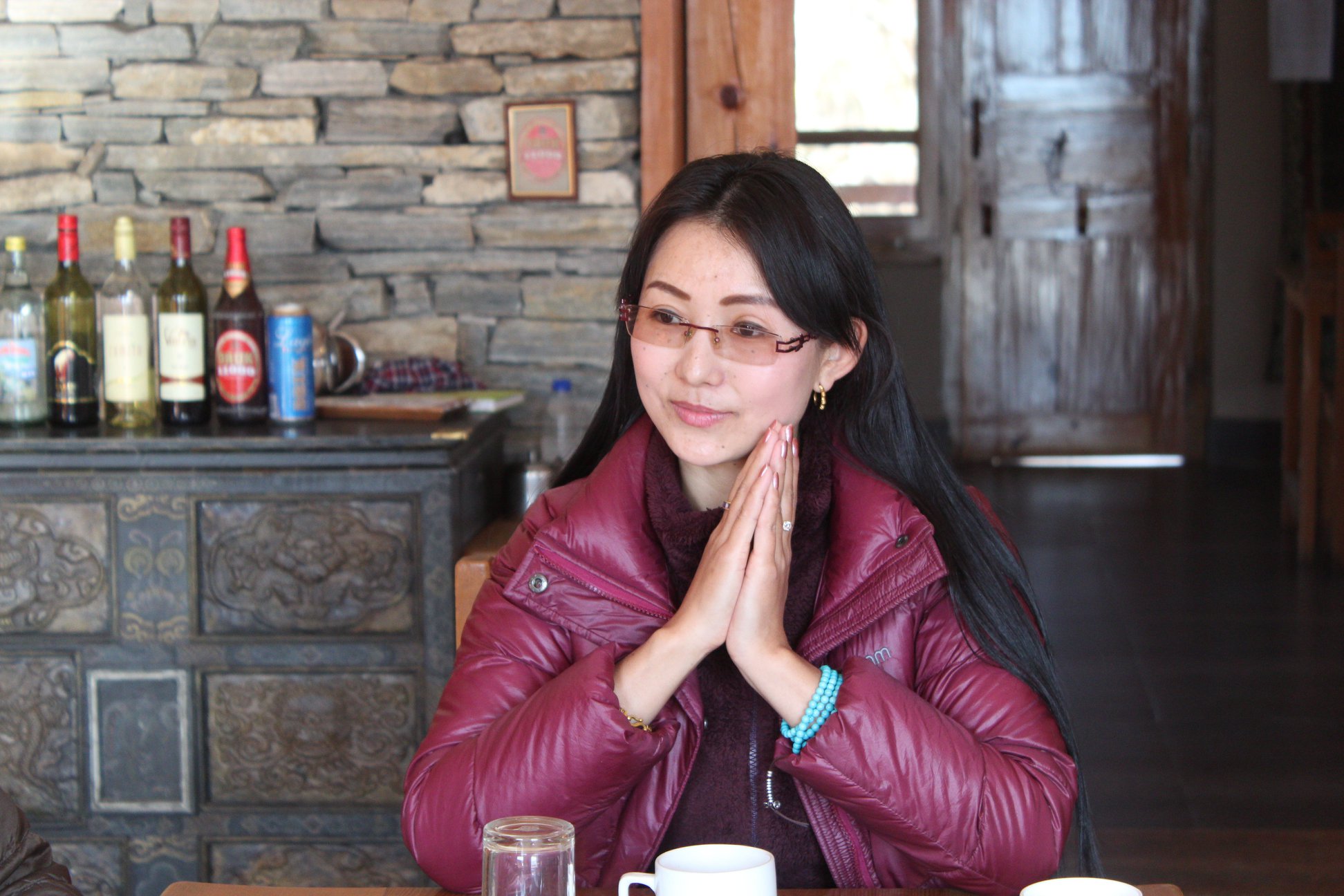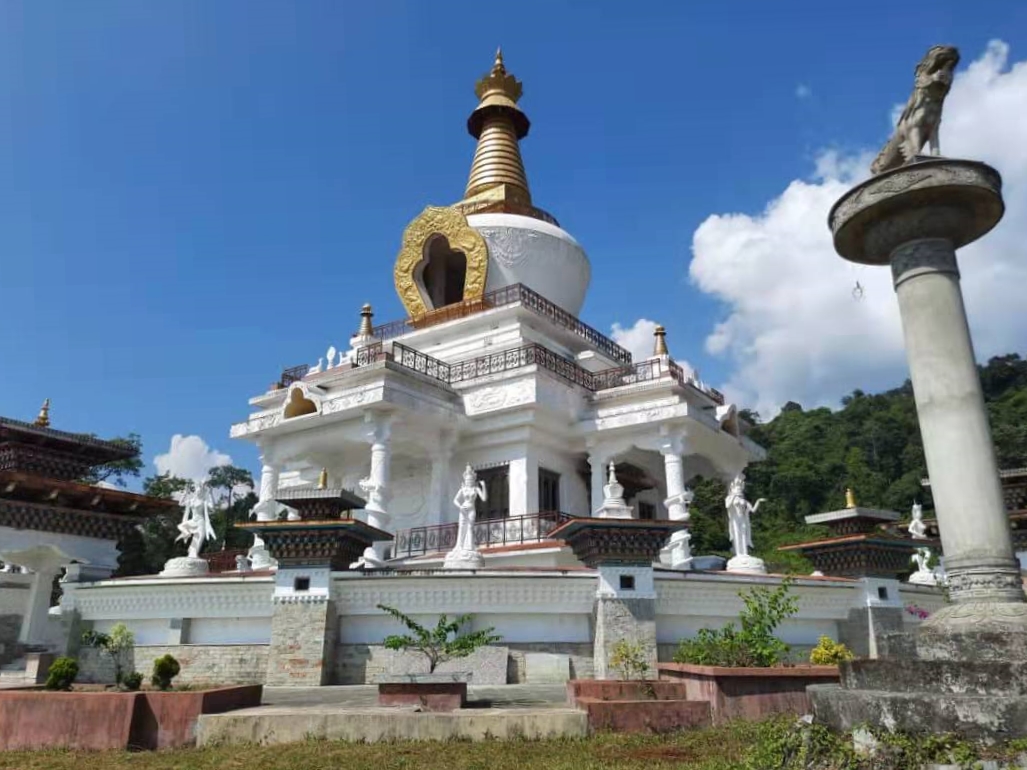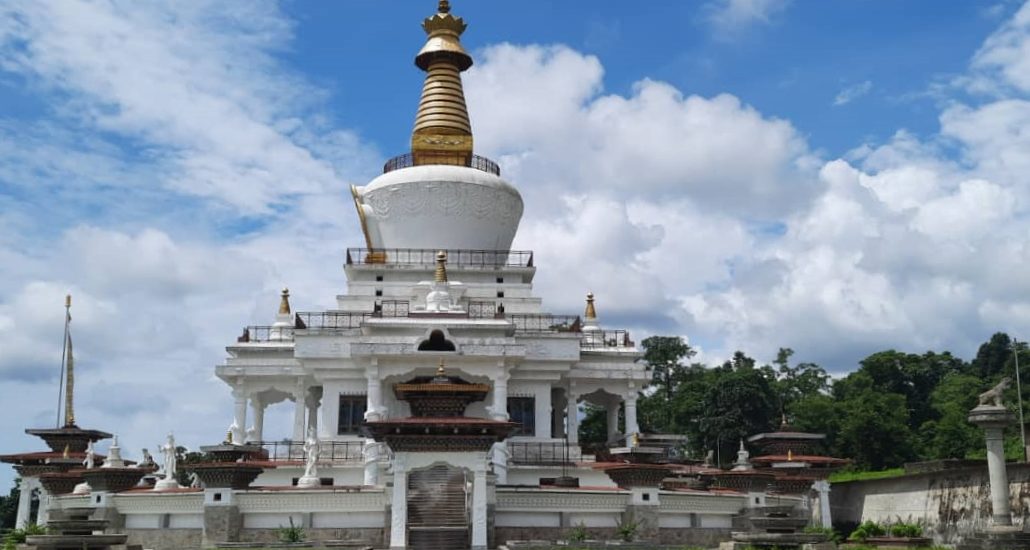Stupa projects are often initiated by an aspiration or prophecy. A modern-day example of this is in Gelephu, a town (thromde) in Sarpang District, southern Bhutan. It shares a border with India, and one can cross into Bhutan here through Assam. It is a hub for Indo-Bhutanese trade, with a pleasant, moderate climate and rainy seasons. In Gelephu, one can also visit the Royal Manas National Park, the most biologically diverse and oldest nature reserve in the kingdom.
Before the pandemic, Lama Tshewang Dorji, chairman of Drodul Phendey Ling Foundation, was hard at work building a stupa with a complex that would provide invaluable religious services to the local community and internationally. The Bhutanese yogi and Dzogchen master, Polo Khen Rinpoche Kuenga Gyeltshen (d. 1970), prophesied that a giant bodhi stupa would be built in Gelephu. The prediction was passed down until the late Khenpo Karpo (1934–2017), who finally passed it down to Lama Tshewang Dorji. Since 2011, Lama Tshewang Dorji and his family, including his daughter and my dear friend Dara Yangchen, have been hard at work with this project.

Lama Tshewang Dorje was born in 1956 in Bhutan, and has devoted his entire life to the Dharma as a Buddhist leader with pastoral responsibilities. He was assigned to France in 1998, at the request of Gangteng Tulku Rinpoche, to guide the community of Pema Yang Dzong, which was being built in Blye, in Jura. In 2007, Lama Tshewang Dorje learned about Polo Khen Rinpoche Kuenga Gyeltshen’s prediction, and he proposed the project to the Bhutanese government. Moved by the scale, ambition, and generosity of the project, the Bhutanese government offered eight hectares of land. For the consecration of the land, Lama Tshewang invited several great masters such as His Holiness Je Khenpo Jigme Tulku Choeda Rinpoche, Gangteng Tulku Rinpoche, Namkhai Nyingpo, and as well as the fifth incarnation of Patrul Rinpoche, who came especially from Tibet. The excavation started in 2009 and the first stone was laid in 2011 by the Minister for Home and Cultural Affairs.
Toward the north side of the stupa, Lama Tshewang Dorje plans to build a shedra, or school of higher Buddhist training, that will house students from underprivileged families and be guided by Khenpos and other supervisors. Once the stupa is completed, about two hundred monks will be train and study here, while learning to perform rituals and consecrations for peace and happiness in the world. Other landmarks that will grace the complex include statues inside the main hall of the stupa, an elderly care home, a lecture hall, a goenkhang (temple devoted to the Dharma Protector deities), a further eight great stupas flanking the main Bodhi Stupa, and 108 smaller stupas on the boundary wall, as per Vajrayana architectural rules.

Drodul Phendey Ling Foundation was able to complete the outer structure of stupa and some basic facilities, but COVID-19 forced the organization to stop work indefinitely. Further budget constraints caused enormous delays in progress. Lama Tshewang Dorje received a brief boost from a bank loan, but it was not enough to continue the work. No doubt, the pandemic has depressed the economy in Bhutan, consequently reducing opportunities to solicit donations and charity.
He has since told me: “I am now concerned that this noble Dharma Project might be left incomplete or half-complete since we are completely out of funds and have no one to rely on for funding to finish it. This is especially concerning since we still must complete the statues inside the stupa, without which the stupa is just an abandoned, empty big house without any sacred consecration or blessing. I have approached the Prime Minister of Bhutan for support, but the Government is not in a position to fund this type of project, as it is fully dependent on donor agents for its own activities. The PM has assured me that the Government will provide all other formal support.”

Lama Tshewang Dorji has since appealed to kind hearts everywhere to help him complete this project. Bhutan remains a unique nation, with a pristine, unspoilt natural environment, strong Buddhist cultural influences, and a citizenry that is proud of the country’s history, heritage, and respected contemporary position. Here, religious masters and spiritual landmarks like stupas still matter. Buddhism in Bhutan is older than the modern nation of Bhutan itself, with a rich history of transmissions and masters or Khenpos that have influenced the fabric of Bhutanese society, culture, and government. Most Bhutanese are adherents of the Drukpa Kagyu sub-set of the Kagyu School.
Not even sacred projects can escape the difficulties of a worldwide pandemic, and I deeply hope that the world and this to-be-completed stupa can soon see away COVID-19 and all its variations.
See more

